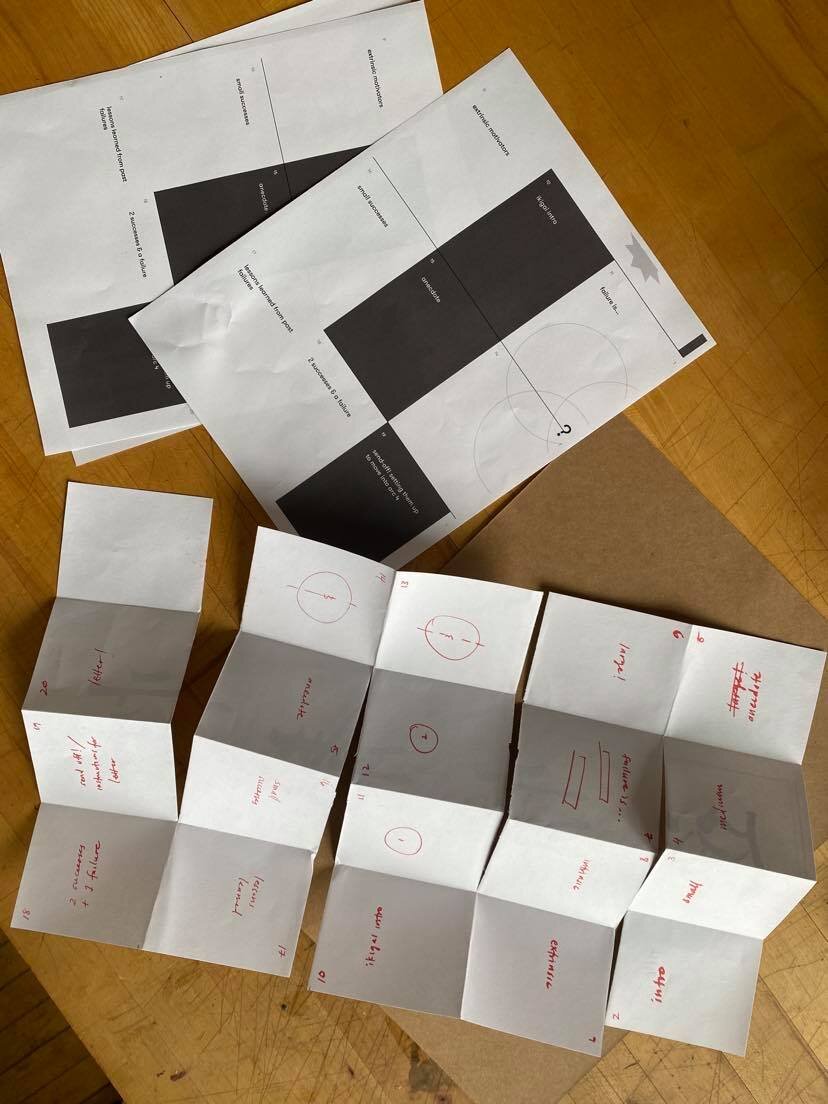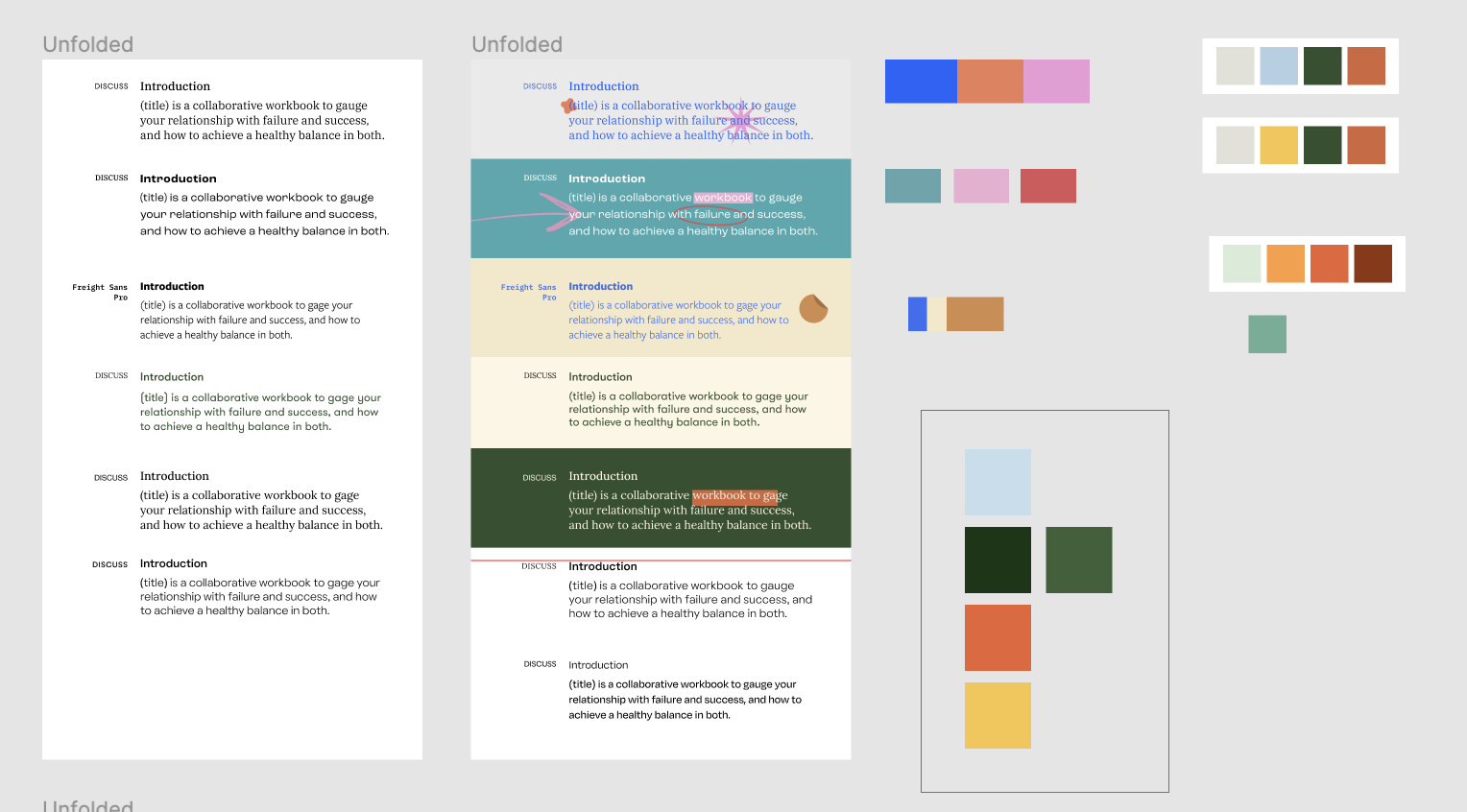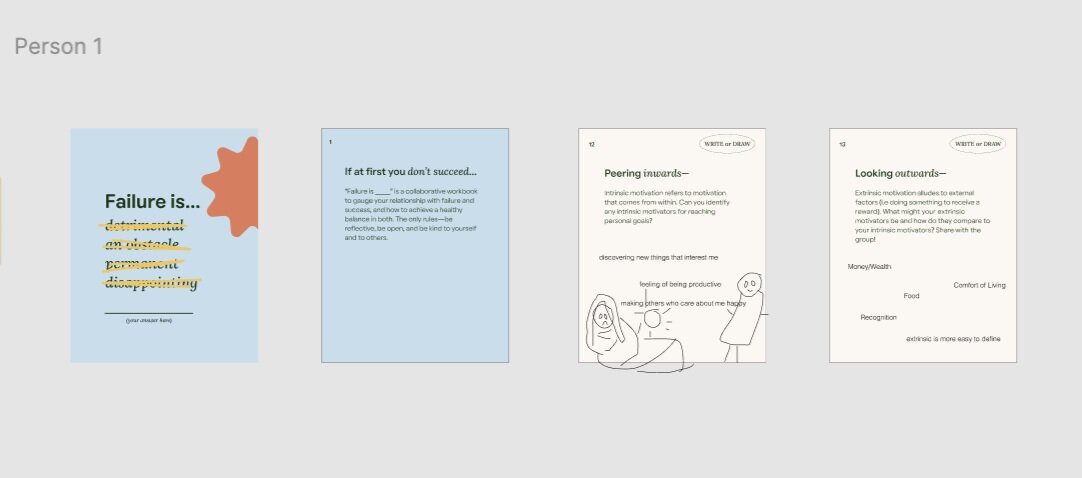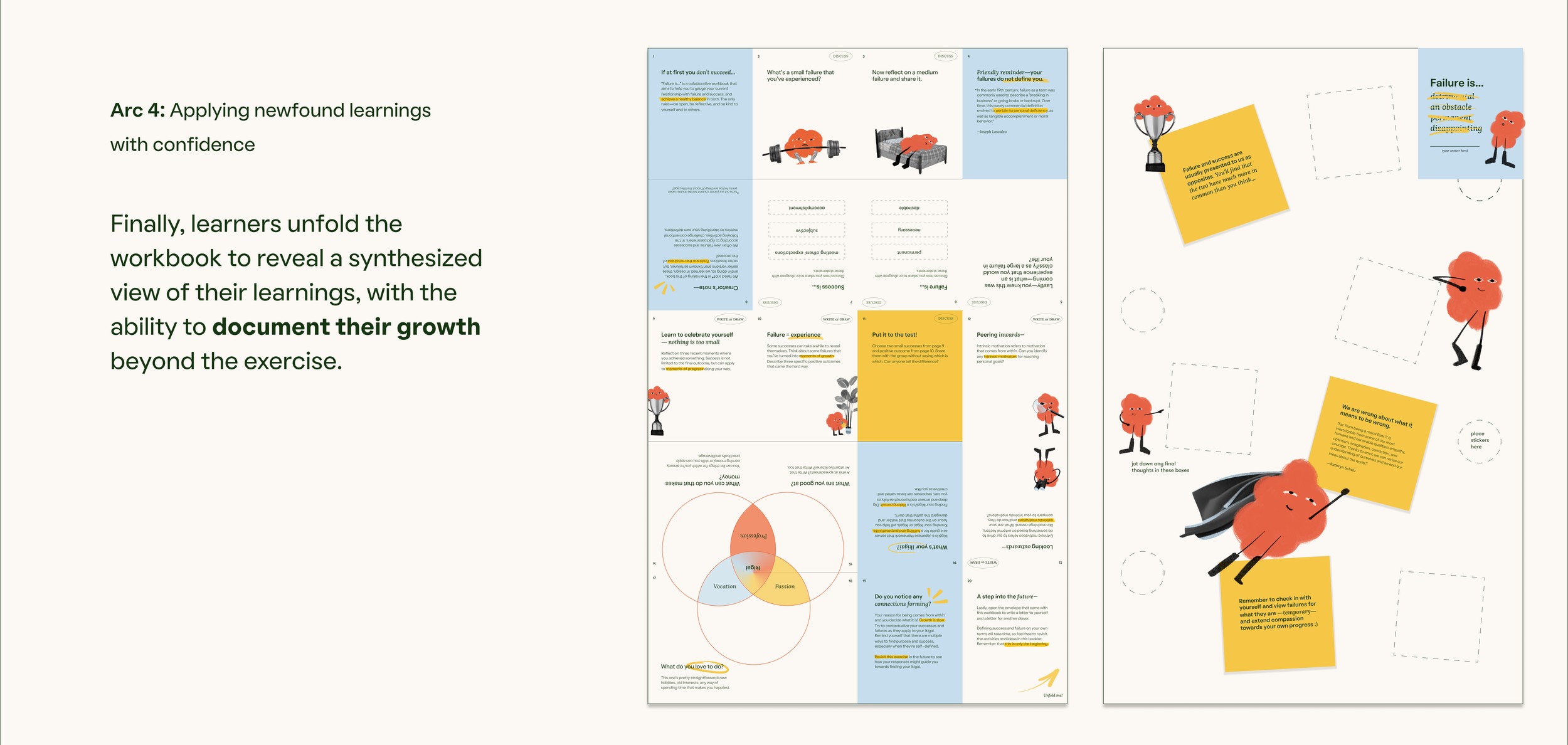Failure is…
Design Brief
Design a learning experience to aid in lifelong learning.
Course & Timeline
Designing Experiences for Learning, Spring 2021 | 12 weeks
Team Members
Sophia Fan & Matthew Guo

When exploring the overarching topic of lifelong learning, my team ultimately chose to hone in on the idea of embracing and reframing failure. Fear of failure not only inhibits lifelong learning, but also prevents risk-taking and stunts confidence in learners. Thus, we set out to design a learning experience that could aid learners in reframing and challenging their current definitions of failure (and by default, success).
“Failure is...” is a collaborative workbook that helps college students gauge their current relationship with failure and success, and achieve a healthier perspective towards both.
Experience Overview





Below is the entire unfolded workbook, and the poster that is printed on the back side, intended to provide learners with takeaways from the experience and a space to return to over time.
Context
The workbook targets college students during times of transition in their education, such as freshman orientation, preparing for post-grad life, or a new semester. We imagined the activity would take place in person, in small groups, to facilitate sharing and discussion.


Understanding the Problem Space
We conducted several mapping exercises at the start of this project to gain a better understanding of the problem space we wanted to tackle and the relevant stakeholders and context. In particular, it was critical for us to identify the hopes and fears of our primary stakeholder group (college students) and the supporting two groups (parents and educators), and then identify the learning gaps across those groups.




User Research
We then did a bit of user research by way of informal interviews and a generative concept mapping exercise in order to grasp learners’ current definitions of success and failure.
Learning Framework
Putting the pieces together from our initial research and concept exploration, we developed our own learning framework to guide us in structuring our experience and ground the work in learning theory. This framework combines many existing learning theories— Julie Dirksen’s “Structured Flow of Goals”, Salen & Zimmerman’s Magic Circle, and Wiggins’ Six Facets of Understanding— to see the entire arc of the experience we aimed to create.
We then utilized the learning framework we created to generate and structure the various sections and activities in our workbook according to the arcs above.
Prototyping & Testing
Finally, we spent several weeks sketching, prototyping, and iterating upon our experience before conducting initial user testing. We tested several activities within the workbook to gain insights into how appropriate, easy to understand, and beneficial they were. As a result, we made final edits to our language, visuals, and structuring for our most current iteration.















